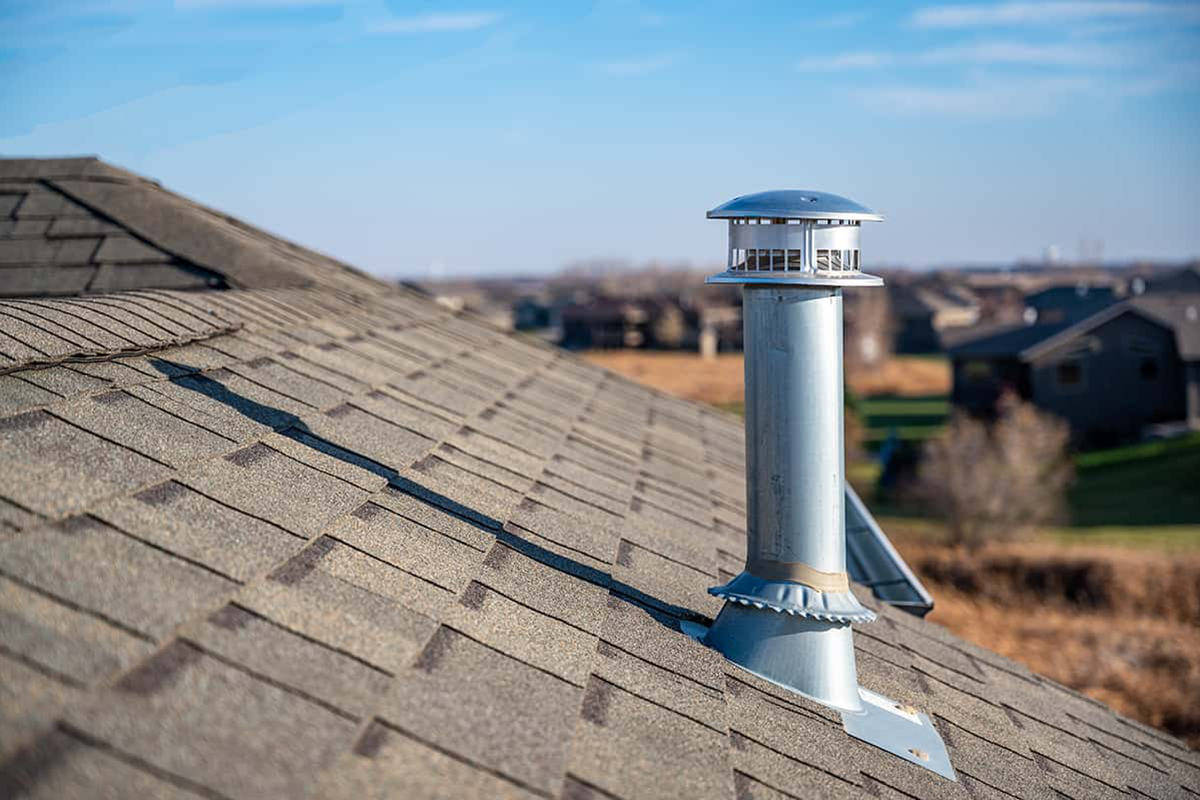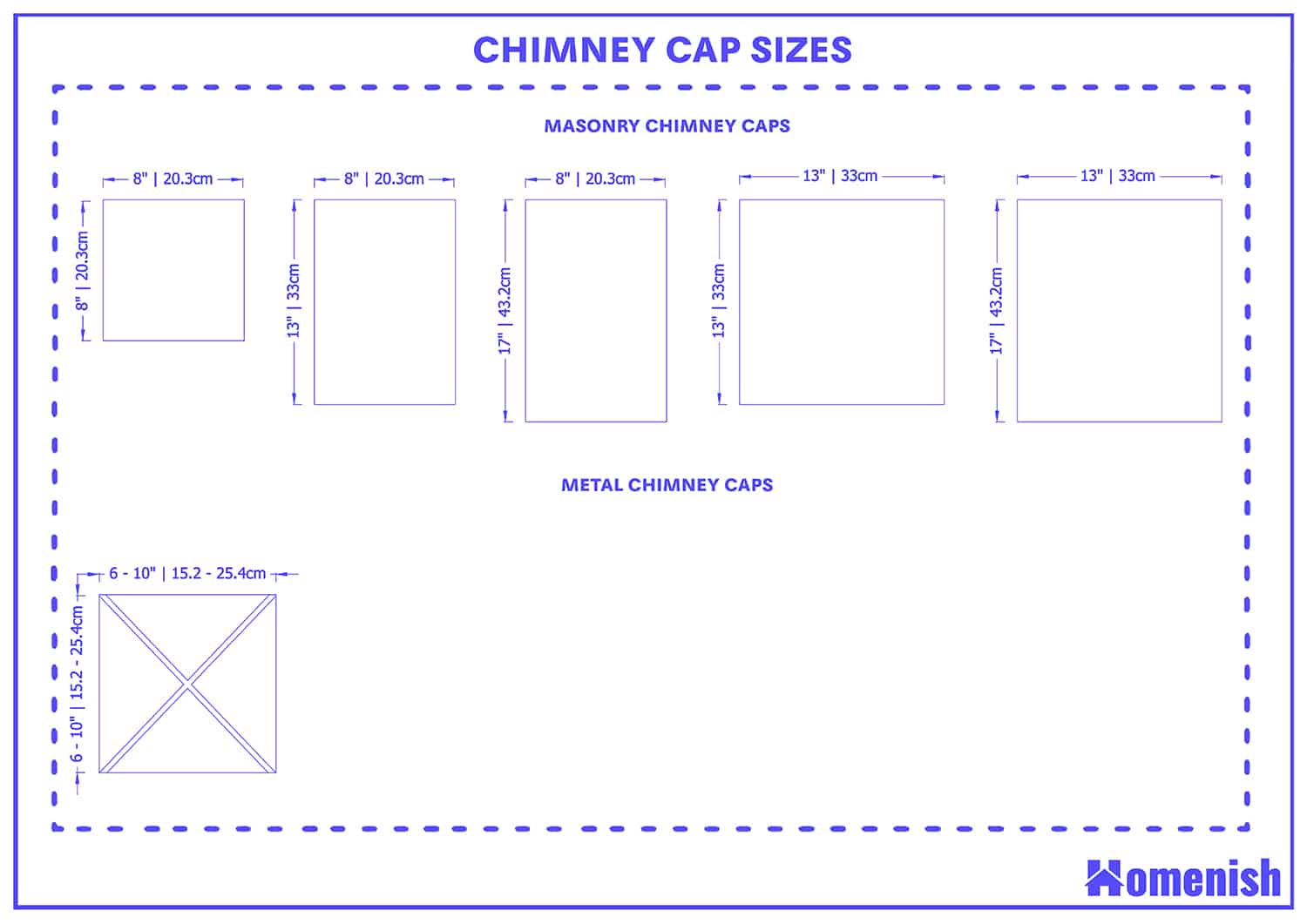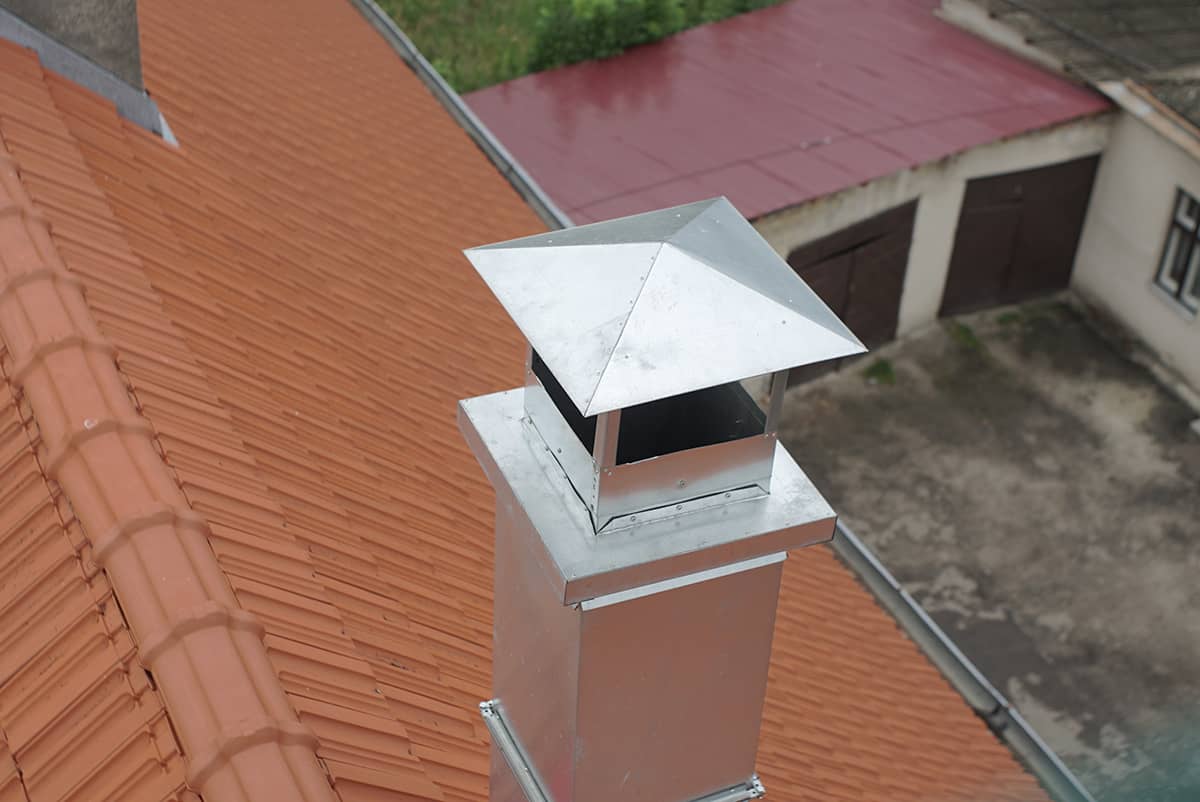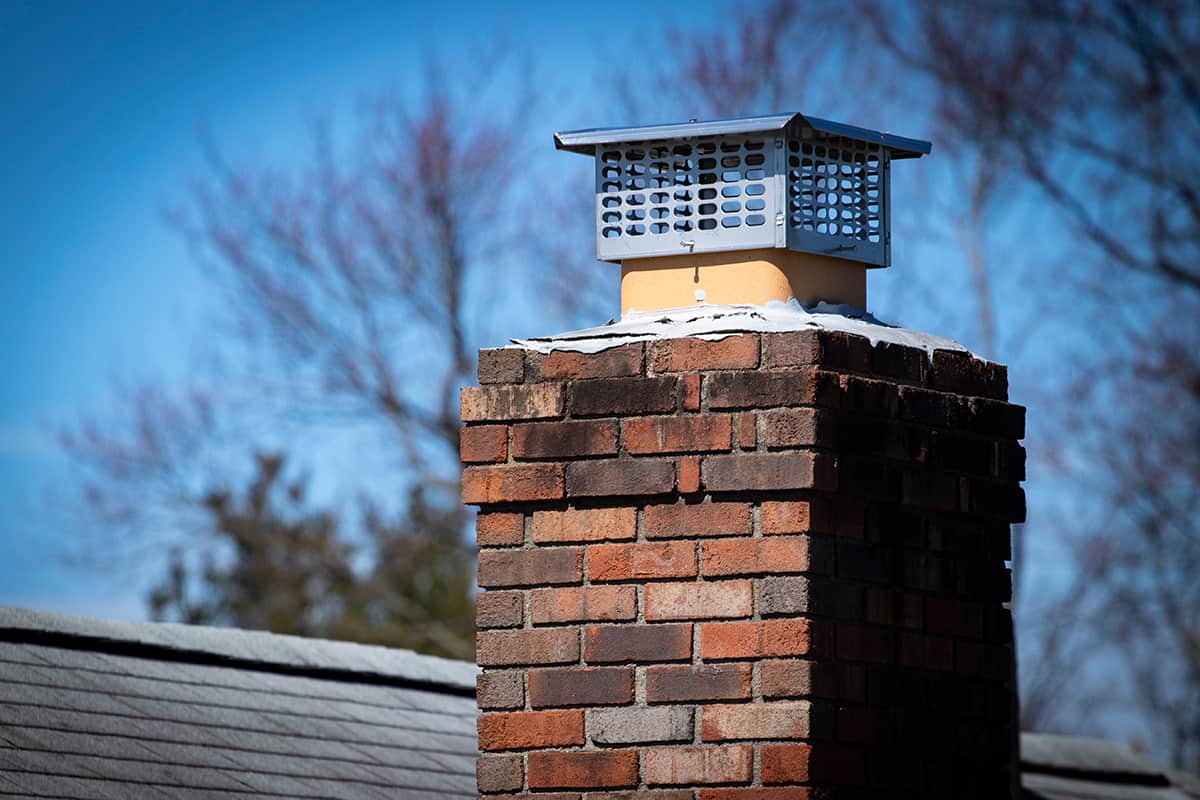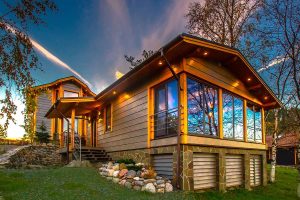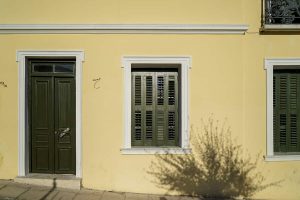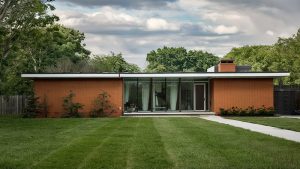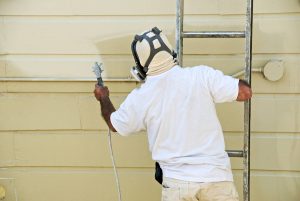A chimney cap is like a guard for your chimney, which will prevent unwanted things from getting into your chimney while still allowing the escape of things you want to get rid of.
In practice, this means that smoke, carbon monoxide, and creosote can all exit your home via your chimney, but pests and rain cannot get in.
Most modern chimney caps are made from stainless steel, copper, and galvanized metal. We will look at the chimney cap sizes and some types of chimney caps in more detail later on.
Chimney Cap Sizes
There are one-size-fits-all chimney caps available, but these are generally considered to be a poor choice among chimney specialists. Since there are different types of chimneys and their flues with a range of different shapes and sizes, it is no surprise that a one-size-fits-all chimney cap will have a poor fit.
If you decide to opt for this type of chimney cap for the sake of ease, because you don’t want to measure your flue, then you can expect to have to replace the cap again in a few years because it won’t do a terribly good job.
Instead, get a chimney cap that is designed specifically to work with the size of your chimney and flue. First, work out which type of chimney you have.
Most chimneys will either be made from masonry or they will be a factory-built metal chimney. Masonry chimneys are square or rectangular, while metal chimneys are column-shaped with a circle at the top. There is not a standard size of chimney cap; however, there are some sizes that are more common than others.
For masonry chimneys, common chimney cap sizes include 8 inches by 8 inches, 8 inches by 13 inches, 8 inches by 17 inches, 13 inches by 13 inches, and 13 inches by 17 inches. A metal chimney cap is generally between 6 and 10 inches in diameter.
Benefits of a Chimney Cap
Keep animals out
A chimney might seem like an unusual place for a family of creatures to set up camp, but it is a surprisingly common occurrence in homes that do not have chimney caps or where the chimney caps are inadequate. Birds, raccoons, squirrels, mice, and other small creatures like to build homes for themselves in chimneys during the warmer months when your fire isn’t in use.
Unfortunately, this can result in quite a nasty mess come fall or winter when you start lighting your fire back up again. The animals living in your chimney can get burnt, and it’s not uncommon for dead baby birds to drop into the fireplace in a living room.
The animals also bring debris with them into your chimney to build nests, which can block your chimney and make for bad smells when the fire is lit.
Cleaning out a chimney where wildlife is inhabiting is expensive, so save yourself the trouble and use a chimney cap to prevent this situation.
Reduce moisture
Without a chimney cap, rain and snow can get inside your chimney. This can cause a number of issues, such as mold and mildew growth on the inside of your home, as well as damage to the mortar on the inside of your chimney to make the structure less stable.
Moisture inside the chimney can also increase humidity in your home. A simple fix is a chimney cap which will stop moisture from getting into the chimney.
Prevent downwinds
Remember that your chimney is essentially an air tunnel connecting the outdoors with the inside of your home. Chimneys are designed to let air and toxins from the smoke drift out of the chimney, but without a chimney cap, they can also let winds in.
In very windy conditions, the cold air will blow down your chimney and into your home to make it colder. A chimney cap can prevent this, helping to keep heating costs down.
Avoid blockages
Debris can easily get into your chimney if you don’t have a chimney cap. Fallen leaves, twigs, and other items can build up to create blockages which will prevent a fire from working as it should and causing smoke to blow back into the home. A chimney cap can prevent this problem.
How to Measure a Chimney Cap
When you need to measure for a chimney cap, safely get onto your roof and take a tape measure. For a masonry chimney, measure the width and length of the sides of the flue, for example, 8 inches and 13 inches. These will be the measurements you need for a chimney cap in the same size.
For metal chimney caps, you’ll want an outside diameter measurement. This is taken right across the top of the flue, from one side to the other, cutting exactly across the center.
Types of Chimney Cap
Galvanized Metal
Galvanized metal chimney caps are popular because they are typically the least expensive of the modern chimney caps. They look good, but over time they will rust and degrade.
They can cause damage to your chimney and the outside of your home, and they aren’t compatible with gas fires. They are ok if you are on a tight budget, but buying a galvanized metal chimney cap is probably something you will come to regret in the long run.
Copper
Copper chimney caps are a better choice than galvanized metal because they won’t rust or need replacing very soon, and they are much lower maintenance. They look stylish from the outside and are reliable; however, they do tend to be more expensive.
Stainless steel
Stainless steel chimney caps are the most expensive option but also the best option. A stainless steel chimney cap will last a lifetime, so it can actually work out to be very affordable if you consider the cost per year compared with cheaper caps like galvanized metal chimney caps, which are inexpensive to buy but will need to be replaced in a number of years.
Buy the most expensive chimney flue you can afford to save money in the long run.
